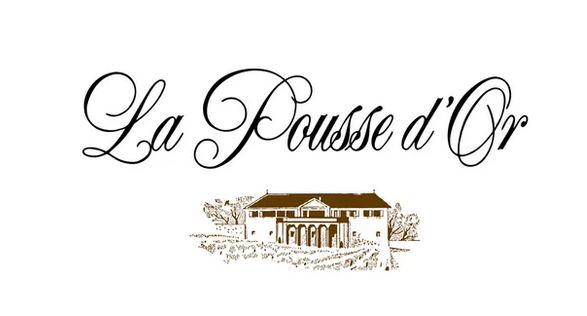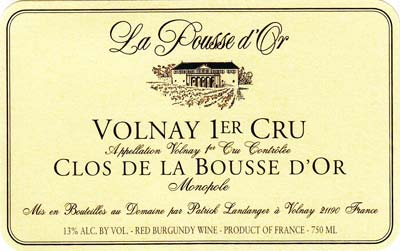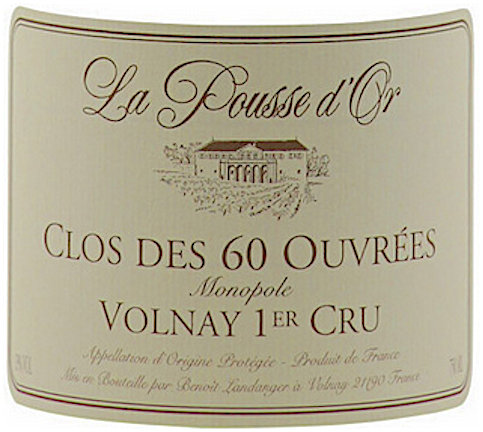
Domaine de la Pousse d'Or
8, rue de la Chapelle
21190 Volnay
Tél.: +33(0)3 80 21 61 33
contact@lapoussedor.fr
www.lapoussedor.fr
Born in the 16th century as a seigneurial estate, Domaine de la Pousse d'Or, nestled at the entrance to the old village of Volnay - a village that once belonged to the First Dukes of Burgundy - has been cultivating vines since the 19th century, but was officially established as a winegrowing estate in 1954. From 1997 onwards, new owner Patrick Landanger's investments and quest for quality have propelled the estate and its wines to the forefront of the international scene, with precise, chiselled wines. Present on Premiers Crus and Grands Crus in both Côte de Beaune and Côte de Nuits, the biodynamic estate manages 18 hectares, including three famous Premiers Crus Monopoles in Volnay: Clos de la Bousse d'Or, Clos des 60 Ouvrées and Clos d'Audignac.
Founded in the 16th century, La Pousse d'Or, which was not yet the winery it is today, is a former seigneurial residence in Volnay, on the lands of the first Dukes of Burgundy. The village of Volnay was the preferred holiday resort of the Dukes of Burgundy as early as the 9th century. The estate also belonged to the King of France, Philippe VI de Valois. Much later, at the very beginning of the 19th century, the estate's viticultural vocation had already been established - as attested by a document from a former owner, François Daudignac - given the presence of old vaulted cellars (still visible today) where some 300 pieces (280-liter Burgundy barrels) were already stored. Subsequently acquired in 1819 by Baron Dumesnil (whose real name was Jean-Baptiste Eugène Jobard), the property has been handed down from generation to generation. Around 1855, Domaine de la Pousse d'Or, whose origins were known as La Bousse d'Or ("bousse" meaning "land" in old French), was part of a much larger winegrowing estate that included two well-known vineyards: La Romanée-Conti and Clos de Tart (two iconic Burgundy estates). The Domaine de la Bousse d'Or in Volnay was therefore a walled vineyard, a Monopole, i.e. a vineyard belonging exclusively to a single owner.
In 1954, the Domaine de la Pousse d'Or was finally established as such, flanked by its château just above Clos d'Audignac (one of its three Monopoles), while still owned by the Lavoreille et Chavigné family. Ten years later, these two families sold the property to the Ferté family, joined by the Seysses and Potel families. In 1964, the Ferté family and their associates acquired the château and its vineyard at an auction held by the Dijon bishopric. Thanks to this purchase, the Maison de la Bousse d'Or (the château) was reintegrated into its vineyard, giving La Pousse d'Or its definitive name.
In 1997, the Ferté family sold their property to Patrick Landanger, a former industrialist (in surgical equipment) with a passion for Burgundy wines. This man, an inventor in his own right, was to restore the estate's glory, making Domaine de la Pousse d'Or one of the Côte de Beaune's iconic estates. With boundless energy and passion, Patrick Landanger made a number of technical investments, rethinking the way the grapes were processed and completely reorganizing the vat room, since the château's height and multi-level basement were ideal for this technical reorganization. It's even said that Patrick Landanger, teeming with ideas and inventions, invented his own "ouilleurs" (for topping up), as well as airlocks for the barrels (rooms) enabling a technical employee to fill a barrel more easily. He also took advantage of the opportunity to expand the estate and increase the range of wines by investing in the Côte de Nuits. In the mid-2000s, in 2008 to be exact, he invested in Domaine Moine-Hudelot on the Côte de Nuits in the prestigious Chambolle-Musigny appellation (3 hectares), complemented by some very fine plots in Morey-Saint-Denis (the 32 ares of the former Louis Rémy estate), Corton (2 hectares), Pommard (1.5 hectares), Volnay (8 hectares), Puligny-Montrachet (0.7 hectares) and Santenay (2 hectares). Today, the estate covers 18 hectares.
During this period, his son Benoît Landanger, an engineer, joined his father on the estate to assist him. With him, the estate moved from organic viticulture (a sustainable viticulture intended from the outset in the late 90s) to Biodynamic viticulture in 2012. Sadly, Patrick Landanger passed away after a long illness in 2023. His son Benoît then took over the management of the estate, promising to develop the business with the same philosophy as his father, and with unflagging dynamism. Lacking neither vision nor talent, Benoît Landanger pursues a common vision to continue producing high-quality Burgundies from environmentally-friendly viticulture and slow, natural vinification. The Domaine de la Pousse d'Or intends to continue to inspire great wine lovers in Volnay, Pommard, Corton, Puligny-Montrachet, Chevalier-Montrachet, Chambolle-Musigny, Morey-Saint-Denis and Santenay.
To produce 90,000 bottles a year, Domaine de la Pousse d'Or can rely on its 18 hectares of Premiers Crus, Grands Crus and Villages appellations, spread between the Côte de Beaune (Santenay, Puligny-Montrachet, Volnay, Pommard, Corton) and the Côte de Nuits (Chambolle-Musigny, Morey-Saint-Denis). Present on 11 Premiers Crus, including 3 Monopoles in the Volnay area alone (Clos de la Bousse d'Or, Clos d'Audignac and Clos des 60 ouvrées) and 5 Grands Crus (Bonnes-Mares, Corton Le Clos du Roi, Corton les Bressandes, Chevalier-Montrachet, Clos de la Roche), the domaine is committed to sustainable, sincere and real viticulture. It's hardly surprising that the wines - whose hand-picked grapes have been de-stemmed beforehand - reflect the nuances and different expressions of each terroir. They have even gained in precision and purity, thanks in particular to the biodynamic farming practiced since 2012 (with Demeter certification obtained with the 2018 vintage). No chemicals, no formatted vinification (we use indigenous yeasts, those contained in the grape bloom and those present in the vat room), no over-ageing (the wines are aged for 18 months in barrels, or even in amphorae in the magnificent vaulted cellars reminiscent of a "wine cathedral"). Here, time is allowed to take its course, and every intervention is measured to produce wines that are the fruit of natural methods, expressive nectars with long ageing potential. Great art!
It's no exaggeration to say that Domaine de la Pousse d'Or wines are among the most highly regarded in Burgundy, even to the point of attracting the interest of collectors. In this respect, the domaine is also an icon. And yet, wine is meant to be drunk and shared, not locked away indefinitely in a crate awaiting speculation. The wines produced by the Landanger family are loved and sought after for their expressive character, reflecting each terroir, each nuance of vintage. These are wines with pure, deep, spicy aromas, silky and long on the palate, which gain in complexity if you know how to wait for them, but are already very gourmand and generous in their young years as soon as they hit the consumer market.
Whatever the origin of the terroir or the grape variety (Chardonnay or Pinot Noir), the wines are made from the same source: grapes that are managed with the utmost care when they arrive at the estate. Even the bottling is done by gravity and the wines are neither fined nor filtered, all according to the lunar calendar: a commitment to biodynamic viticulture!
Among the wide range offered by the estate, two of the three Monopoles are particularly noteworthy. 
This wall plot, located next to the Volnay town hall, was planted mainly on clay-limestone and marl soils in 1958, and then extended in the late 60s and 70s. The grapes are destemmed, undergo cold maceration for a week, and then ferment using indigenous yeasts (i.e. without the addition of selected or additive yeasts). Aged in French oak barrels (30% new wood) for 15 months, this wine presents delicious, gourmet notes of minerality, wild flowers, black cherries, leather and dark chocolate. Precise on the palate, with a well-balanced fatness and a long finish. A wine for laying down!
With this wine, the discerning connoisseur gains in happiness (as is already the case with the estate's other crus). The late Patrick Landanger said of this wine, as of all his others, that it "brings drops of happiness", as if to underline the vocation and "modest" contribution of the winemaker. He was right: the estate's wines have a real signature. But first, let's take a look at the name! L'ouvrée. A term widely used in Burgundy since the Middle Ages, the ouvrée is a unit of measurement for the amount of soil that a farm (and wine) worker could actually plow in a whole day. This cuvée pays tribute to the peasant vision of Burgundy that we love so much for its human character and rich traditions.
Produced from vines aged between 30 and 60 years, facing east near the Meursault appellation, this cuvée has a distinctive style that sets it apart from the rest of the wines in the domaine's range. In fact, Benoît Landanger and his father wanted to orient this wine from 2018 with full aging in terracotta amphorae. The tension of the wine and the purity of the aromas are felt and exhaled. The textures on the palate, thanks to the amphora, are more velvety and the aromas sublimated. The palate is rich and deep, the nose spicy, refreshing with licorice, greedy with intense black fruit and mineral notes. An aesthetically pleasing wine!
1947, 1959, 1961, 1964, 1966, 1969, 1971, 1976, 1978, 1985, 1986, 1989, 1990, 1993, 1995, 1996, 1997, 1998, 1999, 2002, 2003, 2005, 2007, 2009, 2010, 2011, 2012, 2014, 2015, 2016, 2017, 2018, 2019, 2020, 2021, 2022, 2023

Website under construction
Available Soon